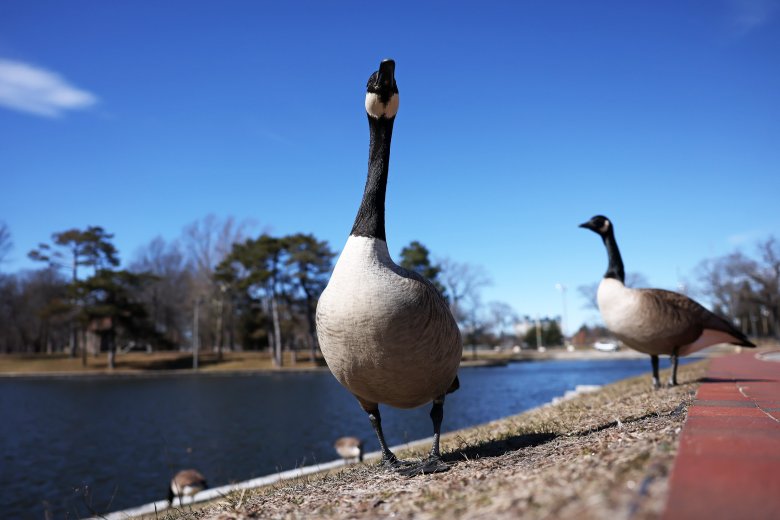As fall migration for most birds comes to an end, we enter a period that birders call “rarity season.” This is when we often see an increase in the number of vagrants that show up in Maine — some that we have come to expect, and others that may have never been seen before.
The reasons for their wandering into Maine are varied and typically depend on the species and timing. All too often, an oversimplified explanation such as “they were blown off course” or “a hurricane blew them here” is given, but most of the time, that isn’t the case at all.
### How Rare Birds Arrive in Maine
I’d like to explain how a few rare birds we’ve seen in Maine over the past month got here, and also share a small prediction for what the coming weeks might have in store for us.
Part of the reason I’m writing this was a post on Threads from John Hodgman, who mentioned running into birders pointing out a tropical kingbird in Deer Isle. The post read:
“(They) told me this was a tropical kingbird from Argentina, thrown off course to Maine by a hurricane.”
The funny thing about this is that we hadn’t had any hurricanes.
The tropical kingbirds found in Maine and the Northeast in the fall all appear to be from the population (subspecies *Tyrannus melancholicus satrapa*) in Middle America north to Texas, and possibly the group (*T. m. occidentalis*) in western Mexico and Arizona — in other words, not from Argentina.
These birds should be flying south, but in a phenomenon likened to having dyslexia, the birds’ internal compass is flipped, causing them to make a “mirror image migration” — a flipped version of where they should have gone — and end up in the Northeast.
Interestingly, there was a summer record of a tropical kingbird in Dayton in 2024, which, based on molt timing, was from the South American population (*T. m. melancholicus*). That timing makes sense as that bird would have been migrating north for its winter (remember, it is from the Southern Hemisphere, so birds migrate north in their winter, which is our summer). So, that bird overshot its migration by probably twice its intended distance — no hurricane required.
Thanks to Louis Bevier and the Maine Bird Records Committee for tracking this sort of thing.
### Goose Central in Aroostook County
Elsewhere in the state, Aroostook County is goose central in October, with a few rarities joining the thousands of Canada geese moving through.
During a Maine Audubon “Wild Goose Chase” field trip with bird expert Bill Sheehan, we were able to see a pink-footed goose and a greater white-fronted goose in Easton.
Pink-footed geese are more of a European species, breeding in Iceland and wintering in the UK, but have been expanding their population into Greenland. That is where the greater white-fronted goose also came from, and we can tell because its features matched the subspecies (*Anser albifrons flavirostris*) breeding there.
There are many Canada geese nesting in Greenland that migrate south into eastern Canada and the U.S., and it is believed that these pink-footed and greater white-fronted geese mix in with them. This is a catalyst for vagrancy known as “association.” So these two rarities are in Maine because they are associating with Canada geese.
Similar to the odd tropical kingbird above, we also had an unusual greater white-fronted goose show up in late September. Rather than the orangish bill of *A. a. flavirostris*, a pink-billed bird in St. Agatha matched better with the western U.S. population, *A. a. gambelli* — the first time a bird from this group has been documented in Maine.
### Hummingbirds Lingering Into Fall
The last thing I want to mention is the number of hummingbird reports that have come in since my last article encouraging you to keep your feeders up. So far, all the reports are of late lingering ruby-throated hummingbirds.
But the later we get into fall, the more likely it is that a vagrant will be detected. So keep those feeders up!
**My prediction:** it is only a matter of time before we find a tiny calliope hummingbird or Maine’s first black-chinned hummingbird.
—
Have you got a nature or wildlife question of your own? It doesn’t have to be about birds! Email questions to [email protected] and visit [maineaudubon.org](https://maineaudubon.org) to learn more about birding, native plants, and programs and events focusing on Maine wildlife and habitat.
Maine Audubon Staff Naturalist Doug Hitchcox and other naturalists lead free bird walks on Thursday mornings starting at 7 a.m. at Maine Audubon’s Gilsland Farm Audubon Sanctuary in Falmouth.
**NOTE:** No walk on Thanksgiving, and in December the walk start time changes to 8 a.m.
https://www.centralmaine.com/2025/10/25/why-do-we-see-rare-birds-at-this-time-of-year/

